-
-
Cubic Zirconia
Cubic Zirconia is currently the most popular substitute to a diamond because to the untrained eye they look identical. Cubic Zirconia or CZ as it is referred to is made from zirconium dioxide a different material than diamonds, which although a different chemical composition comes closer than any other gem to matching the characteristics of a diamond. Natural CZ was first discovered in 1899 but it wasn’t until the late 70’s that man made CZ first came into production for use in jewellery. CZ on first impression looks just like a diamond but under close inspection there are differences, it has a gravity of between 5.6 and 6.0 which means it’s 1.6 times the weight of a diamond. It has a hardness of 8 on the Mohs scale, a refraction index of 2.176 and a dispersive power of 0.060, which means that it’s not as hard as a diamond, it’s slightly less sparkly but displays more prismatic fire which means more colour sparkles within the gem. Another point to note is that natural diamonds display impurities which CZ doesn’t its also clear in colour which most diamonds aren’t, but they can be coloured by adding metal oxides in the production process. Unlike diamonds CZ are good thermal insulators which mean they become warm but can’t withstand the same kind of heat a diamond can, which is one test that is used to distinguish diamonds from CZ. Caring for CZ is important because they are more brittle than diamonds and susceptible to wear and tear such as chipping and scratches over time.
-
Cultured Freshwater
Pearls
Cultured Freshwater Pearls get their name from being cultured in freshwater lake or pond farms, with China and the United States being the main sources.
Nucleation is the surgical procedure to implant a foreign object into the oyster to activate the secretion process. This cultivation period takes years to produce pearls. Generally, 2-7 years in freshwater depending on the host’s natural habitat. The longer the process of cultivation, the bigger the pearl size expected.
Slight variation of colour and shape it’s a sign of their individuality and naturally occurring. Their unique shapes and wide range of colors combined with their attractive prices and charming character, have made them a favorite among jewelry designers, shoppers and pearl connoisseurs alike.
How to Care for Cultured Freshwater Pearls
- Wear them often. Pearls love moist environments so wearing them frequently keeps them from drying out.
- After every wear, wipe any build up oil or other substances on pearls with a non abrasive cloth
- If your pearl is visibly stained, wipe it with a soft cloth dipped in a mixture of lukewarm water and mild soap. Do not submerge pearl in water as the collateral material attached to the pearl may not do well with liquid solution
- Dry pearl thoroughly before storing in flat, fabric-lined casing to avoid scratching the soft pearl surface.
- Never clean pearls with steam or ultrasonic jewelry cleaner as it will likely damage the surface nacre of the pearl.
-
GEMSTONES
-
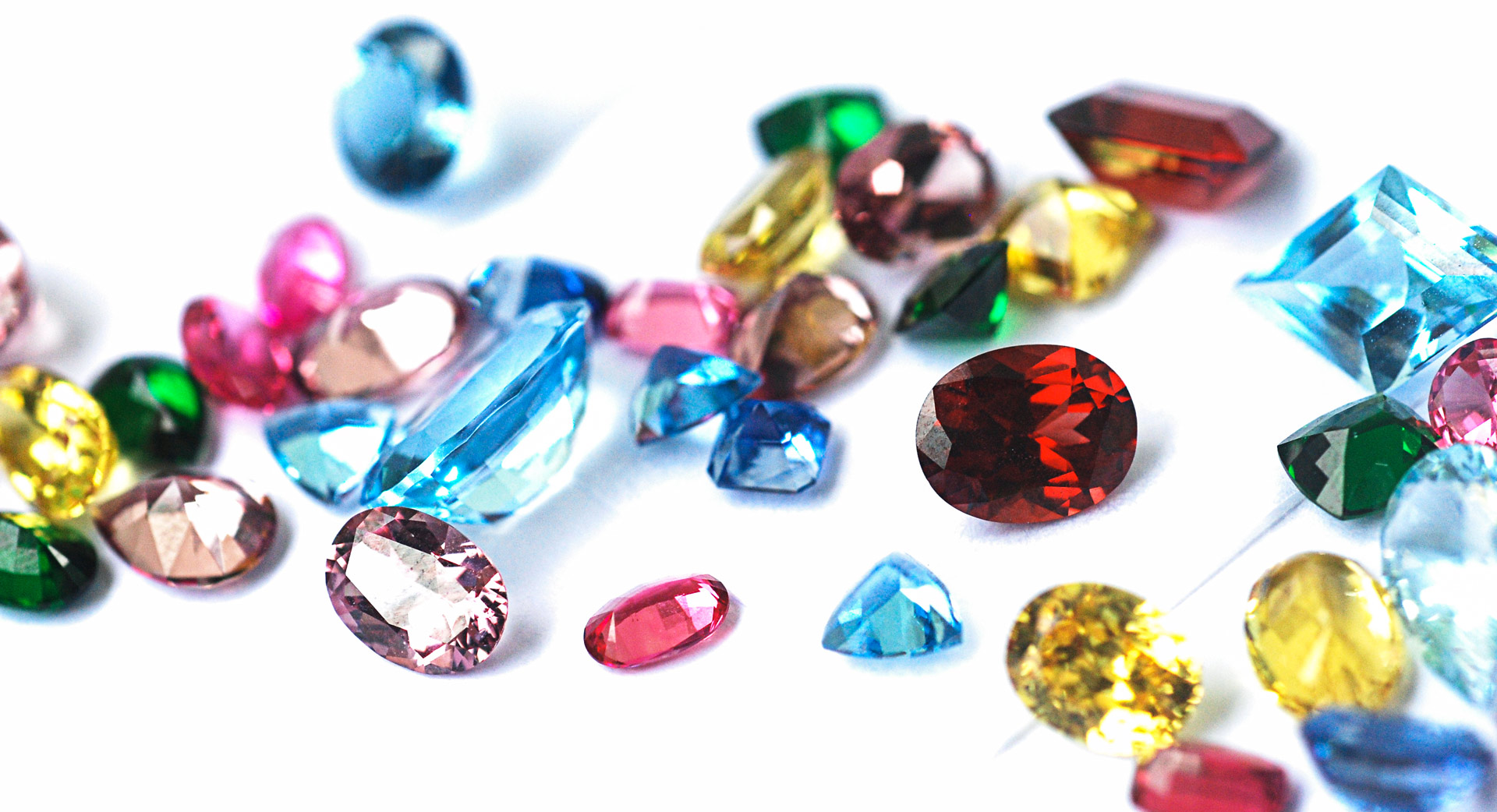
A gemstone (also called a gem, fine gem, jewel, precious stone, or semi-precious stone) is a piece of mineral crystal which, in cut and polished form, is used to make jewelry or other adornments. However, certain rocks (such as lapis lazuli and opal) and occasionally organic materials that are not minerals (such as amber, jet, and pearl) are also used for jewelry and are therefore often considered to be gemstones as well. Most gemstones are hard, but some soft minerals are used in jewelry because of their luster or other physical properties that have aesthetic value. Rarity is another characteristic that lends value to a gemstone.
-
GEMSTONES AMETHYST
-
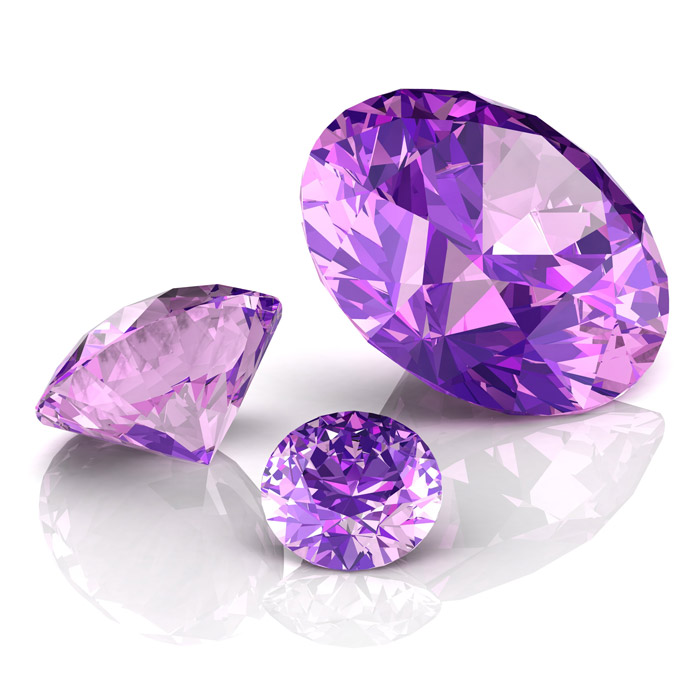
Gem lovers have long valued amethyst, the purple variety of quartz, for its deep color and clear crystal. Amethyst receives its purple color from its iron content and natural irradiation under the Earth’s surface.
Through the ages, amethysts have inspired spiritual symbolism in many societies. The February birthstone with the color of royalty, beautiful amethyst can showcase designs and fashions of all kinds, from simple to intricate.
Click here for all our designs with Genuine Amethyst
-
GEMSTONES CITRINE
-
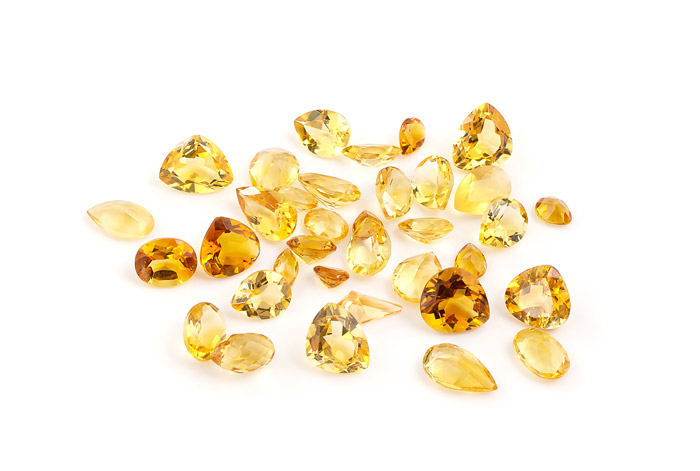
As the yellow to reddish orange variety of quartz, this gem is available in many sizes and is a durable choice for any jewelry setting. The rise of “earth tone” fashions have made this readily available gem a popular jewelry stone in recent years.
Citrine’s affordable autumn hues make it a great option for trendy jewelry. Recently declared a November birthstone alternative to topaz, this stone is becoming even more popular.
Click here for all our designs with Genuine Citrine
-
GEMSTONES DIAMONDS
-
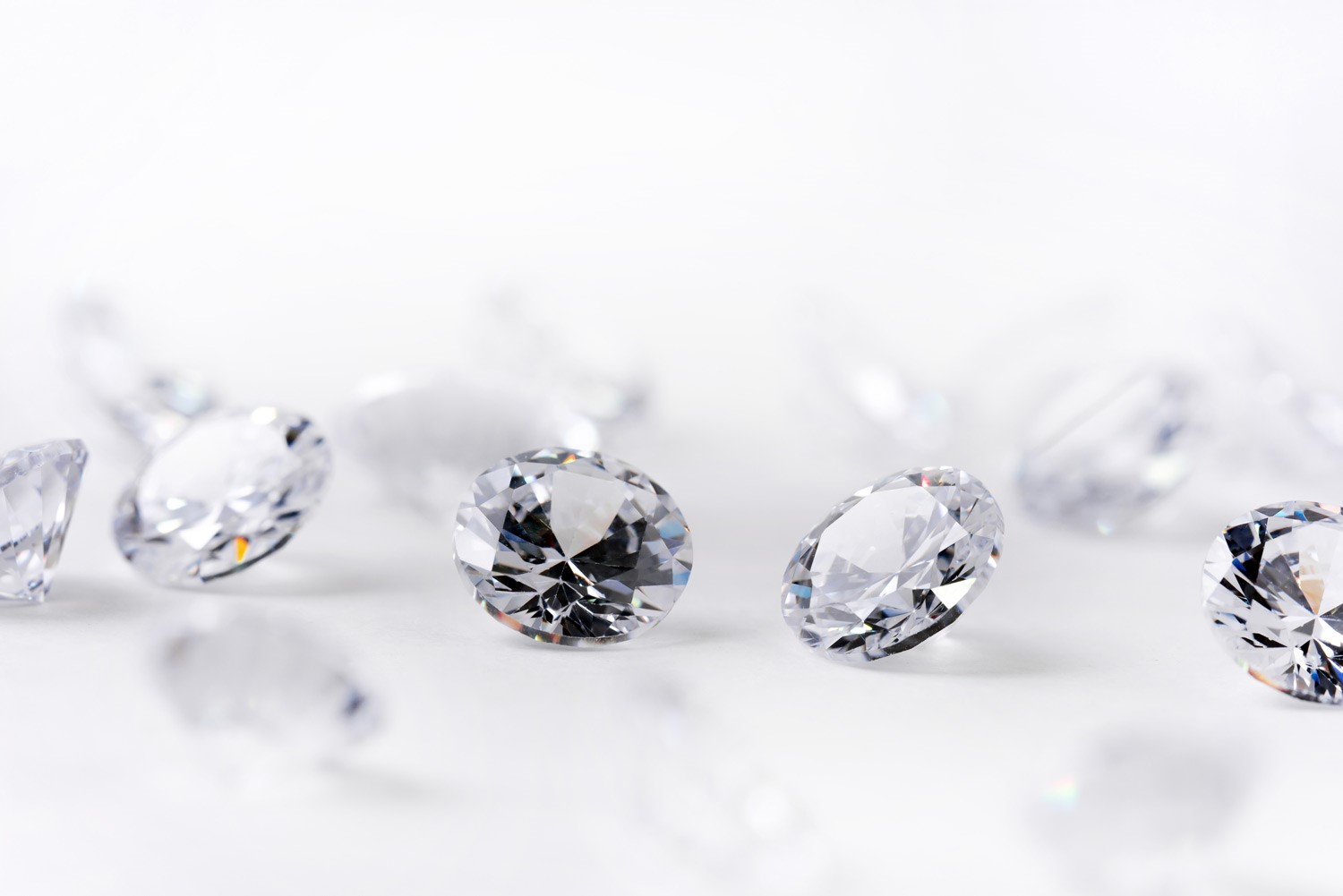
Diamond is the most romanticized and heavily marketed of all gemstones. Nearly every jewelry establishment handles diamonds. Diamonds are not rare but high-quality diamonds that can be used in the jewelry are rare.
Diamond is a solid form of the element carbon and formed at very high temperatures and pressures, deep within the earth. It is the hardest natural substance and easily scratches any other mineral. Most natural diamonds have ages between 1 billion and 3.5 billion years.
The name comes from the Greek word adamas, meaning the hardest steel, and hence the hardest gemstone.
Four characteristics, known informally as the four Cs, are now commonly used as the basic descriptors of diamonds: these are its weight in carats (a carat being equal to 0.2 grams), cut (quality of the cut is graded according to proportions, symmetry and polish), color (how close to white or colorless; for fancy diamonds how intense is its hue), and clarity (how free is it from inclusions)
We use Clarity VVS and Color D-F Diamonds in our Piercings.
Click here for all our designs with Genuine Diamond
-
GEMSTONES EMERALDS
-
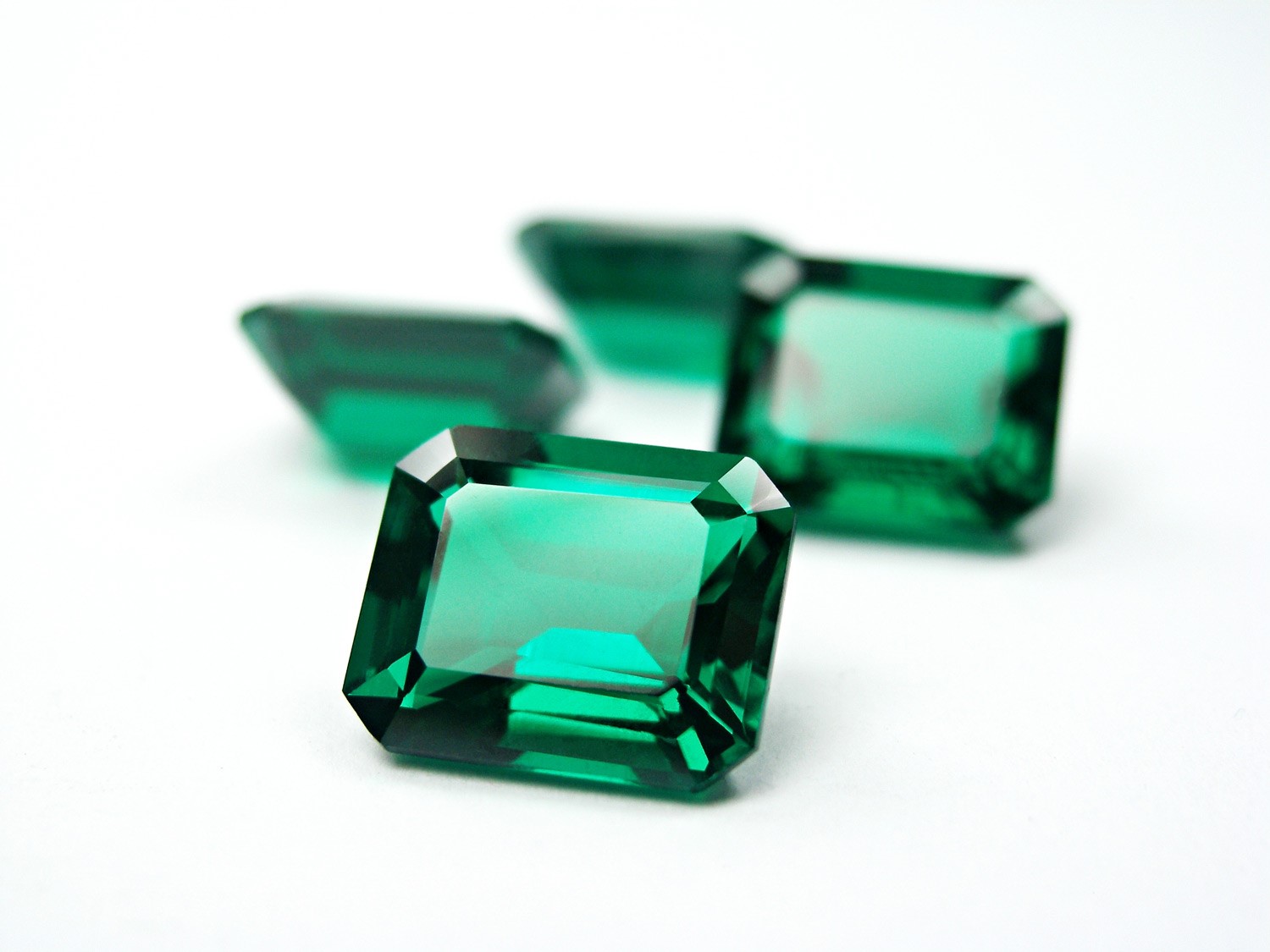
Emerald has been synonymous with the color green since ancient times. A fine emerald is a truly breathtaking sight, and this member of the beryl family deserves its placement among the traditional “Big Four” gems along with diamond, ruby, and sapphire.
The name comes from the Greek smaragados for "green," through the Latin smaragdus to the Middle English esmeralde.
The Emeralds we use in our products are from Brazil and are vivid green in color.
The challenge is to find more stones of the same size to produce not just one single Piercing. We want to assure the repeated availability of our products. Emeralds come mostly in square, rectangular or oval shapes. Recutting
an Emerald to a round shape is possible but a part of the weight and value will be lost.
Emeralds usually have internal fractures, so clean with warm or room temperature soap and water. Avoid wearing a gem where it will get rough treatment.
Due to the inclusions within an emerald, it is not wise to clean these gems in an ultrasonic cleaner.
Click here for all our designs with Genuine Emerald
-
GEMSTONES PERIDOT
-
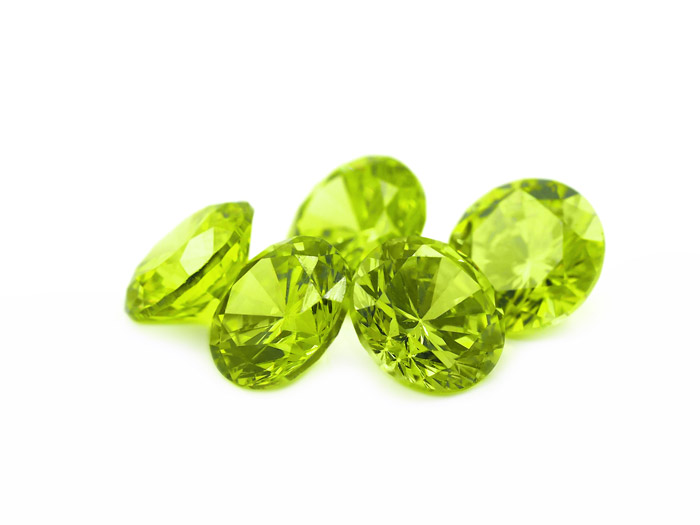
The modern August birthstone Peridot, has been prized as a jewelry stone since ancient times. Always green in color but with considerable variations, a peridot’s particular shade depends on its source.
The name Peridot comes from the Middle English peritot. In the Middle Ages, the gemstone was considered a stone that could provide healing powers, curing depression and opening the heart.
Click here for all our designs with Genuine Peridot
-
GEMSTONES RAINBOW MOONSTONE
-
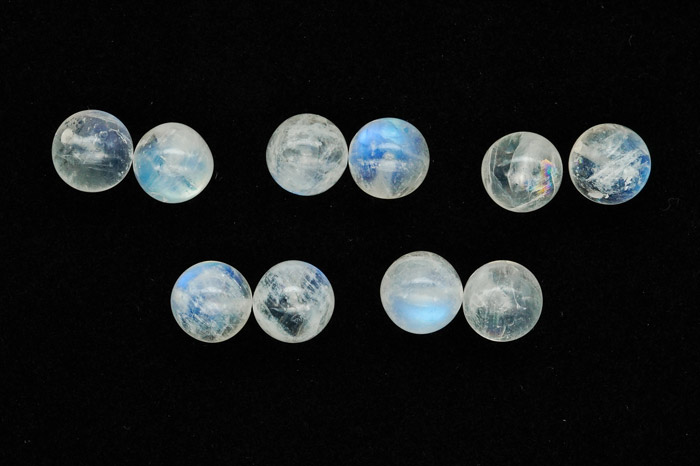
Found all over the world, moonstone is prized for its blue to white adularescence — a billowy, moonlight-like sheen. Despite being somewhat fragile, this alternative June birthstone is a popular choice for jewelry.
With a mysterious sheen reminiscent of moonlight, moonstone has been treasured for thousands of years, and its popularity has grown even more in recent times. Known as adularescence, this shimmering effect just below the gem’s surface is caused by a fine layering of feldspar minerals.
-
GEMSTONES RUBY
-
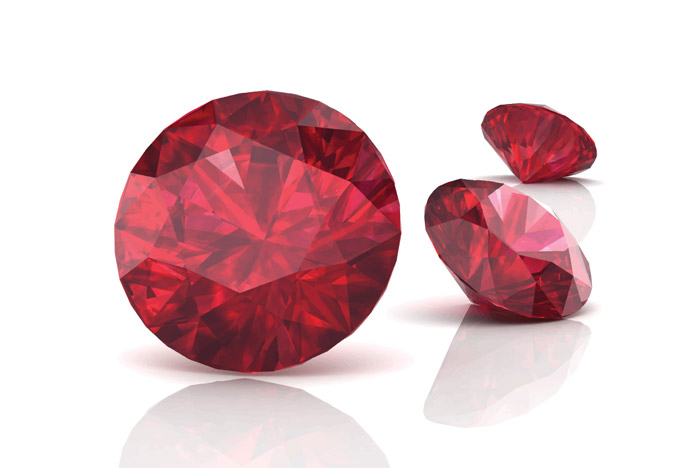
One of the most popular traditional jewelry stones, Ruby is exceptionally durable. Its colors — always red — can reach vivid levels of saturation. Fine-quality rubies are some of the most expensive gemstones.
This gem’s exceptional hardness makes it very resistant to scratching. This quality makes it possible to wear ruby jewelry every day for any occasion. The highly-prized deep, red color of the finest rubies is popularly associated with love and passion. A ruby can make a strong symbolic statement. Inclusions, which would detract from the allure of other stones, can bring a unique character to a Ruby.
Click here for all our designs with Genuine Ruby
-
GEMSTONES SAPPHIRE
-
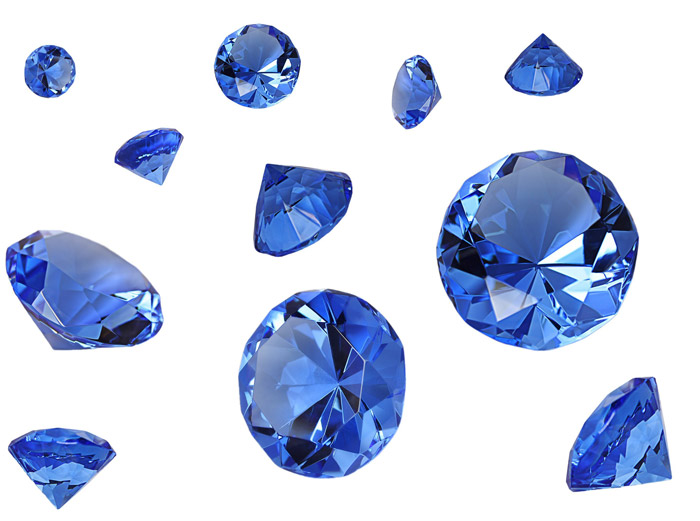
Few gems have held our attention over millennia as well as sapphire. The pure blue colors and excellent durability of this gem-quality member of the corundum family make for an exceptional gemstone. However, not all sapphires are blue. The September birthstone comes in every color of the rainbow. Except red.
Long associated with royalty, sapphires are some of the most popular (and expensive) gems in the world.
Click here for all our designs with Genuine Blue Sapphire
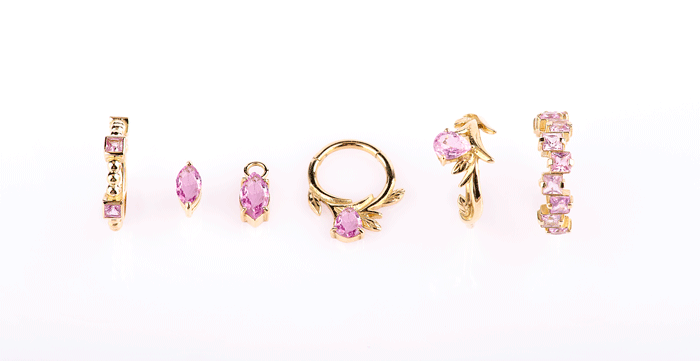
After blue, pink is the most highly valued sapphire color. As Sapphires and also Rubies are simply a variety of Corundum, the pink is the boundary line between rubies and sapphires since pink is commonly considered a light tone of red. It is more common today to call them Pink Sapphires instead of Pink Rubies.
Click here for all our designs with Genuine Pink Sapphire
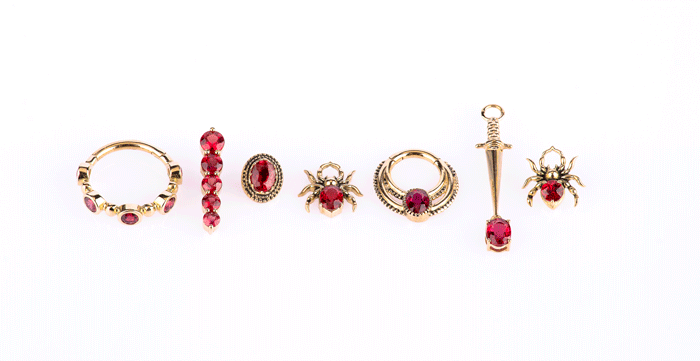
Songea Sapphire: they are named after a location Songea in Tanzania, which is the place of the origin of this gemstone. The sapphires found here are generally in the shades of yellow, orange and red.
Click here for all our designs with Genuine Songea Sapphire
-
GEMSTONES DIFFUSION
SAPPHIRE
As genuine blue Sapphires became very rare, they are also very expensive.
Diffusion Sapphires are a reasonably priced alternative which has the same appearance as a genuine blue Sapphire.
Lattice diffusion is a treatment process that uses heat and chemicals to diffuse an element into a gemstone to artificially change its color.
It is considered the best process to enhance the color in Sapphires as the stone is actually a genuine Sapphire, with its inclusions and internal flaws being unchanged. A blue color is “diffused” into the natural-looking clear sapphire.
Click here for all our designs with Blue Diffusion Sapphires
-
GEMSTONES TOPAZ
-
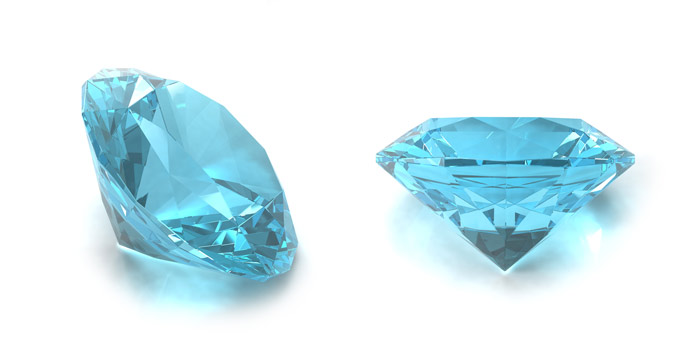
The traditional November birthstone, Topaz is a popular gem. Although frequently associated with golden yellow as well as blue, it can be found in a variety of colors, including colorless. The rarest are natural pink, red, and fine golden orange, sometimes with a pink tone.
Naturally occurring blue topaz is quite rare. Typically, colorless, gray, or pale yellow and blue material is heat treated and irradiated to produce a more desired darker blue.
Click here for all our designs with Genuine Topaz
-
LAB CREATED DIAMONDS

Lab Created Diamonds are 100% diamonds. The only difference is that the origin is a laboratory and not the Earth. Lab Created Diamonds are identical to mined diamonds possessing the same chemical composition, hardness, brilliance and fire – just as a greenhouse-grown orchid is identical to one found in nature.
Lab Created Diamonds are less expensive if compared to mined Diamonds. Moreover, they are a responsible and environmentally friendly choice, which is another great selling point.
CUT The cut of a laboratory-created diamond is essential to its beauty. Our excellent-quality precision-cut Lab Created Diamonds and their beauty can easily be distinguished from that of similar items in Cubic Zirconia. | CLARITY Clarity describes the purity of a laboratory-created diamond. | COLOR Most diamonds used in jewelry range in color from colorless to slightly yellow. |
| 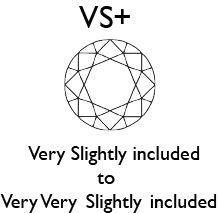
| 
|
Carat
The weight or size of a diamond is measured in carats (ct.).One carat weighs 1/5 of a gram and is divided into 100 points, so a diamond weighing 1.07 ct. is referred to as "one carat and seven points".
*For more information, visit www.igi.org

-
LAB CREATED GEMSTONES
The primary difference between natural and lab created gemstones lies in their origin. Natural stones form geologically over an extended period, while synthetic stones are crafted in laboratories using precise methods.

Lab Created Paraiba is made from Yttrium Aluminum Garnet (YAG), a synthetic crystalline material commonly used in jewelry. It has a hardness of 8.5 on the Mohs scale, offering excellent mechanical strength and durability.

Synthetic Sapphire, also known as synthetic corundum, is primarily composed of aluminum oxide. With a hardness of 9 on the Mohs scale, it is one of the hardest materials available, second only to diamonds. While the chemical composition of natural and synthetic sapphires is the same, the controlled production process of synthetic sapphires ensures more uniform and potentially higher-quality crystals.
Click here for all our designs with Lab Created Gemstones
-
Lab Created Opals
Lab Created Opal (GIA: Polymer Impregnated synthetic opal) is impregnated in the laboratory in around a year and has similar properties as that of natural opal. The main difference with natural opal is that the naturally occurring process has been sped up in the laboratory. Our Lab Created Opal is a beautiful opal with a perfect color dynamicity - revealed the beauty of Precious Opal.
| | Lab Created Opal (with resin) | Natural Opal | | Elements | SiO2.nH2O+Resin | SiO2.nH2O |
| Hardness | 4 | 3-5.5 |
| Specific Gravity | 1.80-1.90 | 1.98-2.20 |
| Heat Resistance | 130 degree C. | 100 degree C. |
Opal material from the KYOCERA Corporation in Japan is composed of at least 80% Silica and is exhibiting beautiful and vivid opal colors.
The material we use is assured with official Material Safety Data Sheet (MSDS).
This material should not be mistaken with Opal-like plastics sold as imitation or fake Opals. Those materials contains mostly 80% Resin and only 20% Silica. Therefore they do not qualify as "Lab Created Opal"
5 standard colors for all balls, round and marquise cabochons

3 standard colors for all spikes, cones and diamond cut opal stones

Click here for all our designs with Lab Created Opals
-
NANO GEMS


Glass-ceramics is a composite material constituted of nano crystalline particles homogeneously distributed throughout a glass matrix. This combination between amorphous and crystalline states makes a type of material with unique properties.
With its hardness approximating that of a Topaz or Emerald, and special optical properties close to that of a Tourmaline, Nano Gems are ideal for gemstone imitations, eliminating common drawbacks of Crystals.
As Cubic Zirconia are perfect for imitating Diamonds, Nano Gems are the best imitations for Color Stones. With its sheer endless color variations, they can fulfill every designer’s dreams.
The material follows REACH (EC) No 1907/2006 and EU RoHS Regulations.
-
PREMIUM CRYSTALS
Crystals are man-made. Crystal glass, made from quartz, sand and minerals, is cut like a gemstone. As with Premium Zirconia, Premium Crystals indicate the higher precision of the cutting process which leads to a higher price compared to other crystals in the market.
As the light doesn't break and reflect (sparkle) in the same way as in Gemstones or Zirconias, Crystals have a foil in the back to reflect the light (mirror effect). Crystal's biggest advantages are the variety of shapes and colors. The foiled back enables the flat shape of crystals which make relatively low size attachments possible. On the other hand, the foiling of the crystals can turn into greenish color from residues like shampoo, shaving foam, toothpaste or similar products.
-
PREMIUM ZIRCONIA


The stones we use under this name are CUBIC ZIRCONIA cut and polished to perfection. They have all the characteristics of a real diamond with its exceptional cut and sheer brilliance. All stones for our Piercings are set by hand and items are polished by hand.
Cubic Zirconia material is relatively cheap and the biggest aspect of the price difference to regular Zirconia lies in the extra cutting and polishing effort and machinery used to make those Premium quality Zirconias. The more precise the facets are cut, the better the light reflects (sparkle).
Our long time supplier of Cubic Zirconia and Crystals doesn't allow the use of the name anymore and that left us looking for alternatives for our body jewelry production. We have worked out the best alternatives that do not compromise the quality of the jewel, and by comparison can even add value without focusing on the stone branding but rather the jewel’s overall quality and the art of decorating one’s ear and body.
Please take this opportunity to grow your confidence in your craft, and the quality and craftsmanship of our designs.